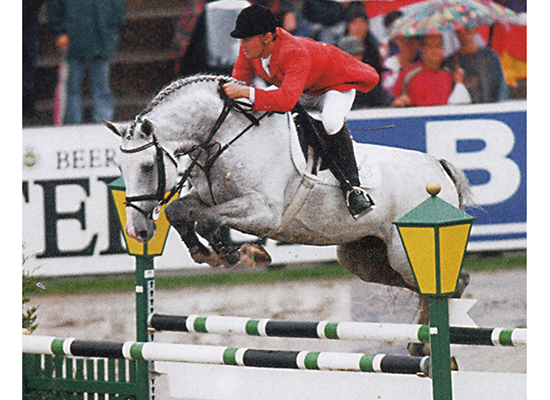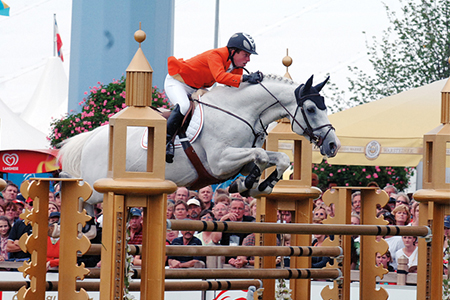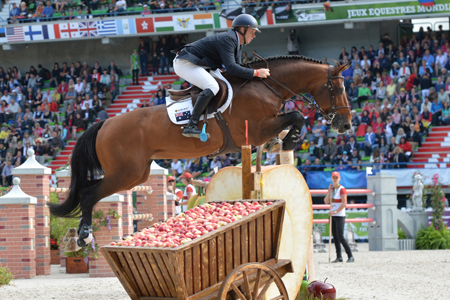1988 – 2014 172 cm Grey
Breeder: Johann Hermann Claussen
Cassini was the result of the breeding policy of one of those fabled traditional farmers – Johann Hermann Claussen, who ran two broodmares on his 140 hectare mixed farm. He sent his three year old mare, Wisma to the local stallion, Capitol I. The mare was by Caletto II out of a mare line that featured the Marlon xx son, Mahmud.
The grey colt, Cassini I was born on April 1, 1988. Bred to Capitol again the next year, Wisma produced a filly, Donata, who was to be the dam of the licensed stallion, Lovari (by Lasino I). In 1992, she gave birth to Cassini II, who was injured after placing third in his performance test, and sent to the breeding barn whence he produced a series of jumping competitors, including Holger Wulschner’s Cassius, Thies Luther’s Cassilo and Steffen Lutter’s Capriolo. Cassini II’s licensed son, Camarque was sold to Denmark for €230,000, where he was the showjumping champion of the Danish stallion approvals.
Top competitors by Cassini II include Steve Guerdat’s Athens finalist, Isovlas Olympic, Alois Pollmann-Schweckhorst’s Casello, Chatwin ridden formerly by the Swiss, Christoph Barbeau and now for Brazil by Alvaro de Miranda Neto, who also rides AD Baltic Carrera, Pikeur Calanda with Franz-Josef Dahlmann and Peter Wylde’s Inken. Cassini II was put down in 2011 after he injured himself… but not before he had produced 1044 competition horses with winnings of €1,483,618
Cassini II is recognized in the 2018 Hanoverian Stallion Book with ten progeny with winnings of over €15,000, none of them superstars – the most successful being Centurio with winnings of €35,173. He has a 2018 FN jumping value as a sire of young horse competitors of 129 (0.98), and a value of 107 (0.98) as a sire of open competitors.
He has a 2018 Hanoverian value of 77 for dressage, 136 for jumping and 104 for type.
Now back to his older brother.
According to the current Holstein Managing Director, Norbert Boley when he came to Elmshorn, the challenge was to make the most of what Capitol had to offer:
“When I started in Elmshorn, Capitol was only four years old, so it was interesting to see how we could use this stallion. He gave real scope, simple horses, and that was good for the market, and good for the sport results. So now you see that balance in a stallion like Cassini who is one of the most important stallions this year (I conducted the interview in 2006) in our country, and he is well-known all over the world. He had two winners at the WEG in Aachen, with Berlin and Cumano. He is by Capitol, but out of a mare by the Cor de la Bryère son, Caletto – and also with the Thoroughbred blood of Marlon.”
Cor de la Bryère provided a balance to Capitol, a little more careful?
“It’s a very good balance to the horses we had before. If you take a look at Eurocommerce Berlin, he is by Cassini but the mare is by Caretino, that’s Cor de la Bryère’s line – a lot of good horses have Cor de la Bryère on the mother’s side – Caretino, Caletto II, it’s a really good cross with the line of Capitol.”
Cassini looked good at his stallion licensing especially in the freejumping, and followed that up with the fourth best score of his stallion test at Adelheidsdorf the next year. He was ridden as a five year old by Herbert Blöcker before the Dane, Bo Kristoffersen took over the next year qualifying the horse in grand style for the Bundeschampionate with seven wins.
In 1995, the pair had success on the open circuit, placing in the Grand Prix of Münster, Kiel, Neumünster and Hamburg. They were members of the winning Danish Nations Cup team in Helsinki and represented Denmark at the European Championships.
1997 saw another change of jockeys, with Franke Sloothaak taking up the reins – with immediate success. Fourth in the World Cup round at Olympia, then with the addition of the San Patrignano prefix (Franke’s sponsors of the time) they went on to a string of successes at Grand Prix, Nations Cups and World Cup levels, to accumulate winnings of over €150,000.
Then it was time for Cassini to take his place in the Holstein stallion barn at Elmshorn. He was so popular that the Holsteiner Association had to limit his use. Breeders who used a Thoroughbred or a young stallion the year before, were given preference. For the benefit of its breeders, the Association only allowed Cassini I to cover mares registered in Holstein, despite requests from all over the world.
Cassini I struck gold (literally) in his first season at Elmshorn, producing the 2006 WEG Champion, Cumano.
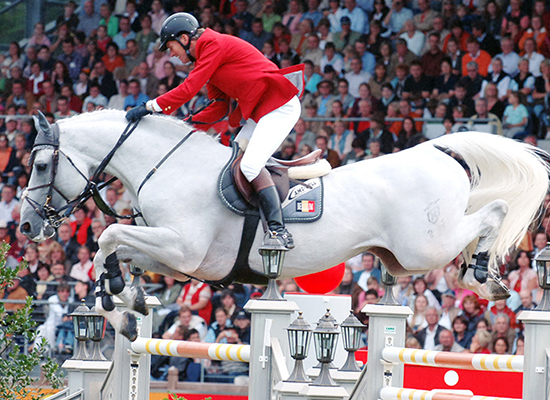
World Champion – Cumano –
The following year, Cassini I produced another star of the Aachen WEG, Berlin – out of Estia by Caretino. As well as the two Aachen stars, Cassini I has produced 25 more licensed sons including Candillo (out of a mare by the Thoroughbred, Grundyman). Candillo who was also out of his first crop, won his performance test at Medingen before going on to international success, ending up in Zangersheide with the obligatory Z tacked on to his name. Candilo is the sire of six licensed sons.
In France, Berlin was one of the more popular ‘outside’ stallions, covering 57 mares in 2007. According to Bernard le Courtois in Monneron 2008 / 2009: “his first three year olds seem to be spectacularly strong over the jumps. Unfortunately, Cassini’s slightly common look is transmitted as well but the elegant French broodmares should see to this.”
According to Holstein breeding director, Dr Thomas Nissen: “It is not easy to find a suitable partner to mate Cassini I with. The stallion himself is a rather solid, heavy type, an attribute he likes to pass on to his to his progeny from time to time. This is why the utilisation of half-bred mares lends itself especially well to Cassini I. Mating Cassini I with daughters of Caretino has also proven successful because of the inbreeding factor to Caletto II. There have always been some people warning us about the inbreeding or respectively, line breeding, that we have been engaged in since the last century, saying that ‘Holstein would suffer the consequences and be ruined at some stage’ because of it. However, the opposite is the case, as witnessed by the activities and results on the international showjumping courses, as well as the covetousness of Holstein blood in other showjumping breeds. What is important is to watch out for the Thoroughbred blood in the second or third generations.” (quoted in Cassini – A Class of his own, by Dr Tanja Becker, in the 2008/2009 edition of Selected Sires of Germany.)
At the 2007 Holstein Stallion licensing, out of 84 colts presented to the Commission, 19 were by Cassini I or II. Contender had 10 representatives, while Quidam de Revel was eleven times represented by sons, grandsons or great grandsons.
It’s a tribute to the way the Holstein breeders jealously guard their lines, that Cassini escaped having a Z added to his name.
According to Norbert Boley: “When Cassini was just eight years old, Mr Melchior said whatever you want, I will buy him. But no, it is important that our breeders know that we take care of their interests, that we don’t sell the good stallions no matter how much money we are offered. Unlike some other breeding associations, our stallions are owned by the association, they are not part of a state stud – that makes us closer to the breeders.”
Cassini is ranked 7th on the German FN standings for 2007 with an index of 158 but by 2013, he slipped down to 28th with a value of 153. On the WBFSH rankings for 2007, he is in 9th place with 29 competitors, five of whom have scored 200+ points: Cumano (Landgraf I), Eurocommerce Berlin (Caretino), Cocu (Caretino), Pikeur Calanda (Calvadeur), Verelst Curtis (Romino) and Cashmira (Caretino).
Eurocommerce Berlin – now retired from competition, standing in Germany as Caspar
On the WBFSH 2014 rankings, Cassini was in 16th place with his most successful product for the season, Vienna Olympic (Contender). On the 2015 standings, he is in 17th place with 57 points earners, the most successful of which is Carambole (Concerto II).
By 2020 Cassini I has dropped to 47th on the WBFSH rankings while Cassini II comes in at 43rd – but he is well represented by his sons like Berlin and Carambole.
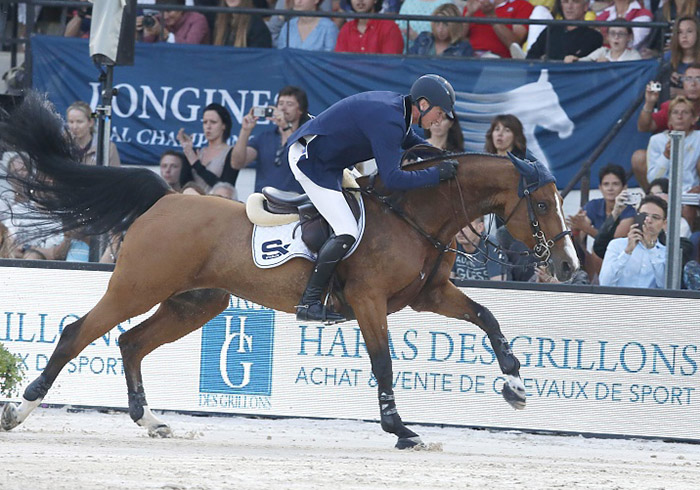
Equita van t Zorgvliet (Darco) and Daniel Deusser
On the 2017 WBFSH rankings he is in 23rd place with his most successful competitor, Equita van t Zorgvliet. His son, Berlin had (just) moved into the top 10.
Competing for Australia at the WEG 2014 – Jamie Kermond and Quite Cassini, out of a Quidam de Revel mare
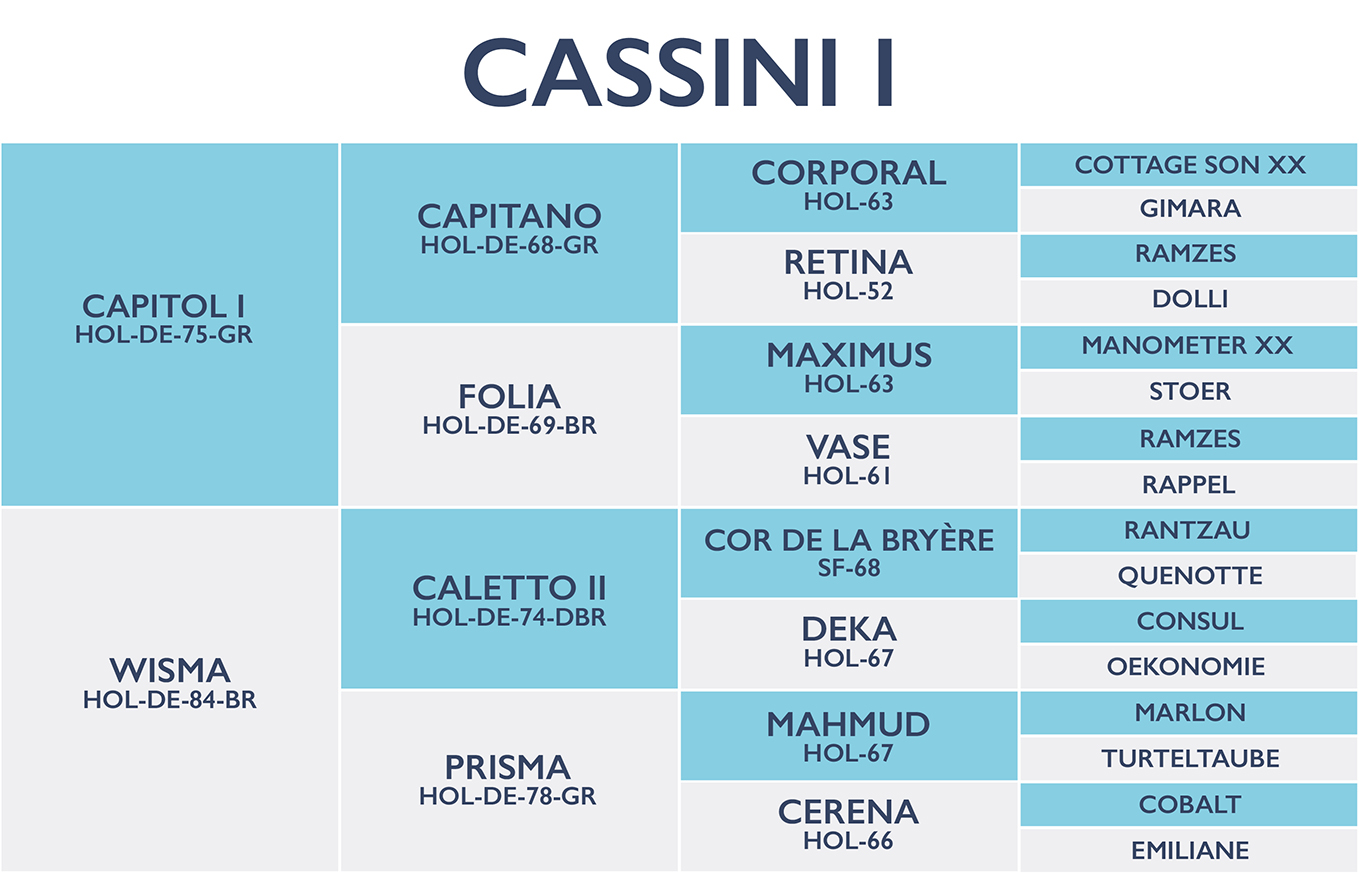
« Back to Great Stallions List

